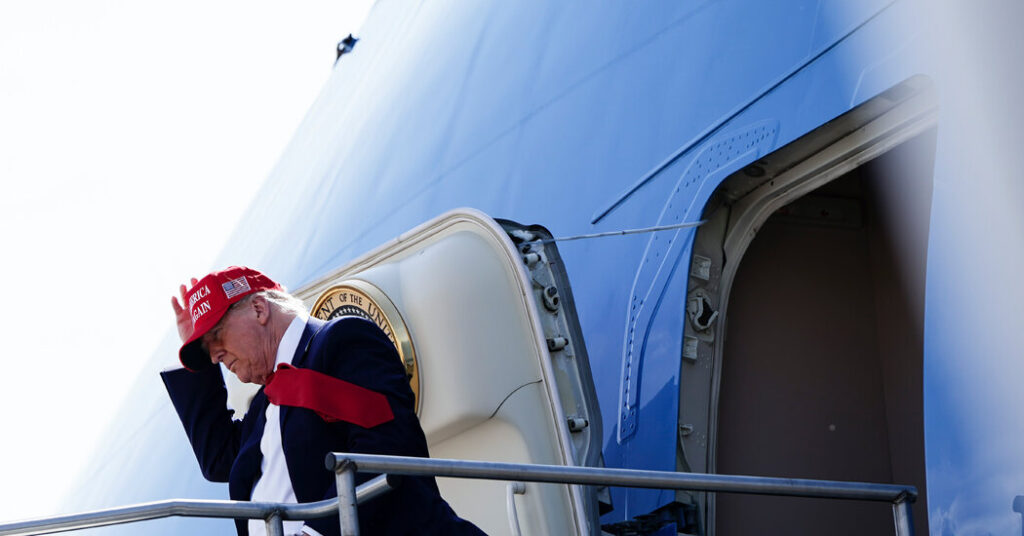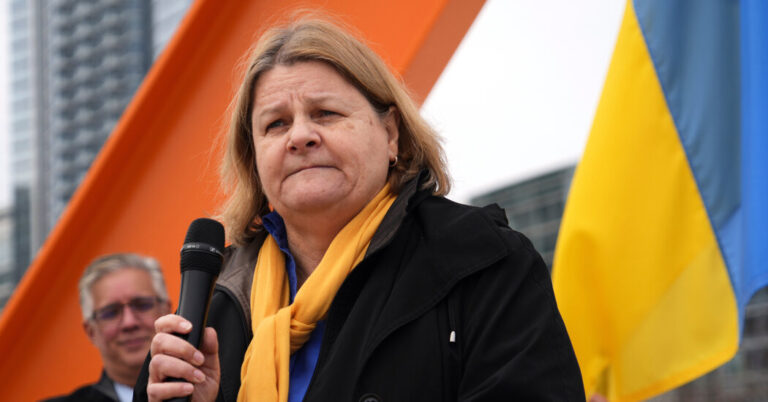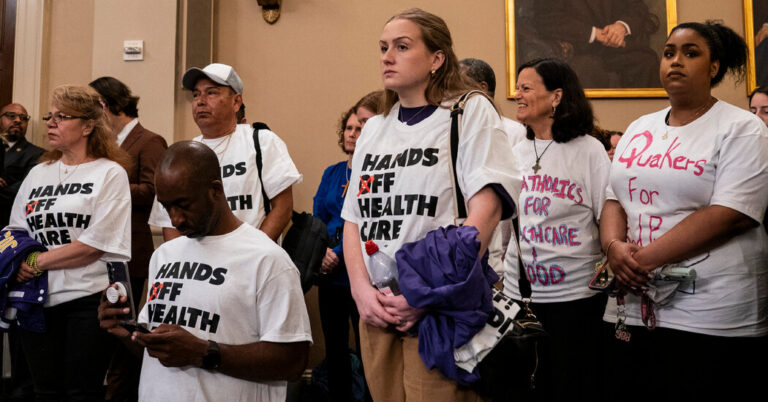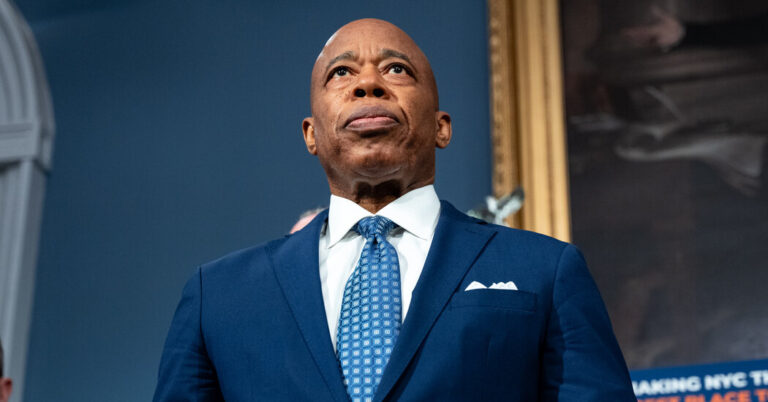
The temporary reduction in tariffs that the United States and China announced in Geneva on Monday will lift, at least for now, the de facto trade embargo that had been in place between the two countries for the past month. It will reduce the chances that American shoppers will face empty shelves during the holiday season and perhaps limit the price increases they will have to endure. It sent stock prices soaring around the world.
But the deal does little to clear the cloud of uncertainty that has hung over the U.S. economy since President Trump took office in January.
If anything, the latest news serves only to reinforce the degree to which trade policy lies in the hands of one man, who sees his unpredictability as a strategic strength and scoffs at the kind of careful, deliberative process that has characterized policymaking under previous administrations.
In a little over a month, Mr. Trump has imposed steep tariffs on virtually every U.S. trading partner, then rolled them back temporarily. He has raised tariffs on China, then increased them further in response to Chinese retaliation, and now rolled back those tariffs as well — but only partially, and only for 90 days. Those back-and-forth decisions followed an earlier series of reversals, which on at least two occasions included tariffs that were announced and rescinded within a single day.
“Many of our trading partners now look at the U.S. and say, ‘Is this now the way trade policy continues in the future?’” said Steven J. Davis, a Stanford economist who has studied the way uncertainty affects the economy. “I think it’s quite clear that other countries around the world are reassessing their view of the United States as a reliable trading partner.”
A measure of economic policy uncertainty developed by Mr. Davis and two co-authors hit a record high this month, even surpassing the levels during the global financial crisis in 2008 and the coronavirus pandemic in 2020. Research has shown that such bouts of extreme uncertainty are damaging in their own right, discouraging companies from hiring and investing.
In the short run, the truce announced on Monday could provide some much-needed clarity. Under the agreement, which lasts 90 days, the United States will cut tariffs on goods from China to 30 percent from 145 percent. China will make a similar reduction in the retaliatory duties that it imposed on imports from the United States.
The new rates are still far above those in place before Mr. Trump took office and will almost certainly result in higher prices for consumers. But the reduction was large enough that it should allow for trade between the two countries — which had all but halted while the prohibitive 145 percent tariffs were in place — to resume to some degree. Many economists expect imports to surge in the coming weeks as companies race to restock while the lower rates remain in effect.
To investors, the agreement also served as a signal that leaders of both countries were looking for a way to step back from the full-blown trade war that had erupted over the past month. Economists had warned that the standoff could lead to “stagflation” — the combination of high inflation and slow growth — as the steep decline in commerce led both to higher prices and reduced demand for workers to drive delivery trucks, pack boxes and stock shelves. That outcome now seems less likely.
Stock indexes surged on Monday following the announcement and continued to rise on Tuesday. The S&P 500, which had fallen sharply when tariffs were announced, has now turned positive for the year.
“What it does is it signals that there is real, tangible progress,” said Sina Golara, a management professor at Georgia State University who specializes in supply chain issues. “There seems to be strong will and a political push to getting a deal. That’s all positive.”
But the agreement with China — like the framework deal with the Britain that was announced last week and the temporary rollback of tariffs imposed on other trading partners last month — is an executive action taken by Mr. Trump. It is not a legally binding treaty ratified by Congress. As a result, there is nothing to stop Mr. Trump from raising tariffs again at the end of the 90 days, or even before then.
On Monday, Mr. Trump said that if China doesn’t agree to a trade deal within the 90-day window, tariffs will go back up and be “substantially higher,” although not to 145 percent.
“If you’re just looking to get your imports in from China, I do think you have at least enough near-term certainty to start shipping as much as possible,” said Alex Jacquez, a former economic adviser to former President Biden who now works at the Groundwork Collaborative, a progressive think tank. “What I don’t think this does is decrease any long-term uncertainty because we still don’t know what the aim of Trump’s negotiations are with China or with anyone else.”
The short-term nature of the deal is likely to limit the benefits, said Gene Seroka, the executive director of the Port of Los Angeles. Companies will bring in products they need urgently, he said, but they will be reluctant to make bigger commitments, knowing the tariff rates could change yet again.
Executives he has spoken to are “hopeful, but very cautious,” Mr. Seroka said. “By no means has anybody said we’re out of the woods.”
For Learning Resources, an educational toy company in Vernon Hills, Ill., the 145 percent tariff rate was effectively an embargo. Rick Woldenberg, the chief executive, quipped at the time that the rate might as well be “100 billion percent.” He immediately paused some shipments, stopped filling open jobs and sued the Trump administration, arguing it had overstepped its authority.
With tariffs now lowered to 30 percent, Mr. Woldenberg said he would probably restart shipment of some of the goods that were stranded in China.
“We’ll probably bring it in because who the hell knows what they’ll do next,” he said. “This is, I suppose, better than the other kinds of chaos we were going through.”
But Mr. Woldenberg isn’t lifting his hiring freeze or making the other investments that have been on hold since tariffs took effect.
“We’re clinging to every dollar,” he said. “We’re going to need them because I have a new tax I have to pay.”
In surveys, many companies have said they are holding off on making hiring and investing decisions until they see where tariffs end up. A mere 90-day pause is unlikely to move them off the sidelines.
“When I’m out talking to business leaders, they don’t know what’s going to happen,” said Austan D. Goolsbee, the president of the Federal Reserve Bank of Chicago, in an interview on Monday. “They can’t make decisions counting on this or any other thing lasting in a permanent way.”
Nor can the Fed itself. Officials have warned in recent months that the tariffs are likely to lead to higher prices and slower growth. But the constant changes in trade policy have made it hard for the central bank to chart a clear path forward for interest rates. Instead, policymakers are essentially on hold, waiting to see how the economy responds before making any decisions.
The deal in Geneva will reinforce that caution, said Sarah House, an economist at Wells Fargo.
“This is a good example of why they’re in wait-and-see mode,” she said. “This is an indication of why they’re not trying to get out ahead of the impacts of these tariff policies, because they could be walked back at any moment, on any weekend.”
Colby Smith contributed reporting.




